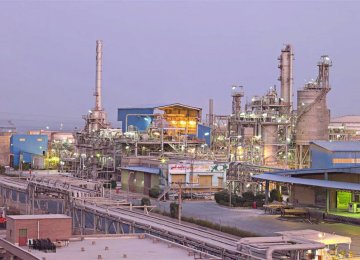As countries around the globe are setting ambitious targets to reduce their dependency on fossil fuels, many will remain reliant on oil and gas for petrochemical production for decades to come. However, the decarbonization of oil and gas operations may well become key to the success of the industry, as many governments strive to keep their climate pledges while also responding to global demand. A recent petrochemical report suggests that the petrochemical market size will reach around $1 trillion by 2030, increasing at a CAGR of 6.2 percent over the next eight years. The increase in demand will be mainly centered around the construction, textile, medical, pharmaceuticals, consumer goods, automotive, and electronics industries.
At present, ethylene, propylene, and benzene are the main petrochemicals being used across the packaging, electronics, plastics, and rubber industries. Most petrochemical products are manufactured using crude oil and natural gas, making many industries highly reliant on the fossil fuel sector.
The Asia Pacific region is expected to dominate the petrochemical market over the next decade thanks to strong regulatory policies supporting the industry. And an increase in natural gas production – to bridge the gap in the energy transition to renewable alternatives – will support the development of the petrochemical industry.
The International Energy Agency (IEA) predicts that global crude demand will continue to increase until 2025, before decreasing at a CAGR of 1 percent between 2026 and 2050. The IEA believes that oil use as a petrochemical feedstock is the only area that will see an increase in demand, with 55 percent of all global oil demand contributing to the petrochemical market by 2050.
But we can expect to see greater decarbonization in the petrochemical industry, as many countries strive to reduce their greenhouse gas emissions, which will drive prices up. An anticipated $759 billion will be required to decarbonize the sector through electrification, carbon capture and storage (CCS) technologies, and other key innovations, according to recent analyses.
A BloombergNEF (BNEF) report, released last month, entitled Decarbonizing Petrochemicals: A Net Zero Pathway, explains how “low-carbon routes [for petrochemicals] will remain more expensive than today’s production”, even though there will be a decrease in production costs. This could lead to the introduction of “green premiums” to provide “strong incentives to replace or reduce plastic and chemicals use in markets with net-zero mandates”.
The lead author of the BNEF report, Ilhan Savut, stated “Governments and corporate net-zero commitments are pushing the petrochemicals industry to cut its emissions by 2050. Despite facing a more complex decarbonization path than any other sector, petrochemicals players’ net-zero targets cover more of the global manufacturing capacity than other heavy emitters like steel and cement.”
Savut suggests that big investments in carbon-cutting technologies now will help oil and gas companies to stay relevant post-2035. Establishing low-carbon operations over the next decade could help fossil fuel-driven firms to remain competitive as larger-scale renewable energy becomes more affordable, and innovative alternatives to petrochemical products are introduced to the market.
Most major oil and gas companies have already begun to introduce CCS technologies into their operations, in a bid to enhance their longevity in a world that is gradually moving away from fossil fuels in an attempt to decarbonize. Despite huge hopes for renewables, there is no doubt that the rising global fuel demand will mean a continued reliance on fossil fuels until the renewable energy industry becomes large enough to meet these needs.
In the meantime, the Intergovernmental Panel on Climate Change is researching how to best decarbonize the energy industry. It has modeled hundreds of potential scenarios to achieve the 2015 Paris climate agreement goals, aiming for net-zero carbon emissions by 2050, finding that the use of CCS technologies was the most effective.
While the cost of decarbonizing the petrochemical industry sounds significant, it actually amounts to around just 1 percent of the $172 trillion total needed to decarbonize the global energy sector. The report also suggests that the industry will need to invest in alternative energy sources for chemical manufacturing in the future, such as biomass and green hydrogen.
The petrochemical industry is expected to continue to grow well into the next two decades, with the demand for petrochemical products continuing to increase worldwide. This will be a major driver for oil and gas demand over the next 30 years, even as we see a decrease in the reliance on fossil fuels for heating and transport. However, as governments put pressure on oil firms to decarbonize their operations, large investments will be required to introduce CCS and other technologies into projects to ensure that the petrochemical industry can remain relevant in a low-carbon world.

 Iran Energy News Oil, Gas, Petrochemical and Energy Field Specialized Channel
Iran Energy News Oil, Gas, Petrochemical and Energy Field Specialized Channel



